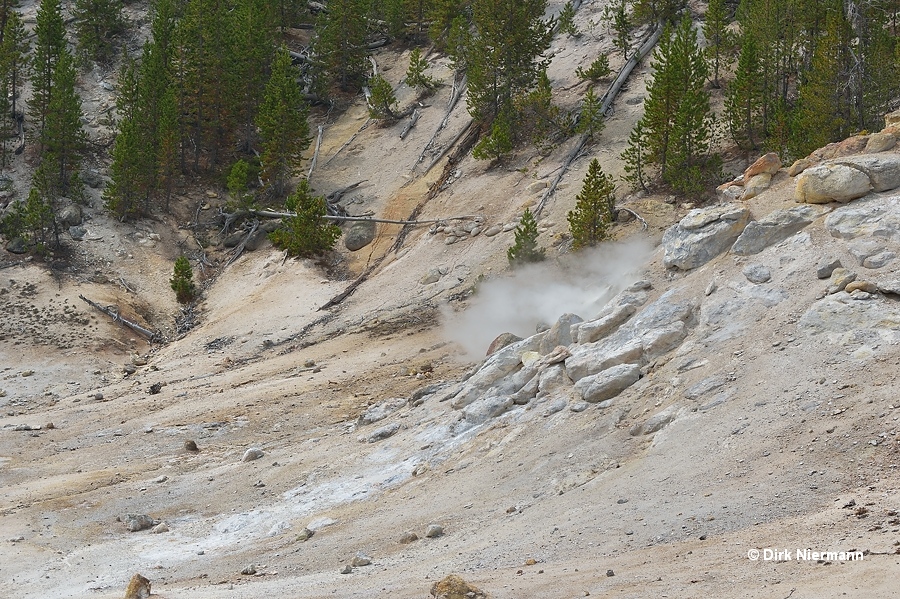Monument Geyser Basin
Monument Geyser Basin is located approximately 600 m (650 yards) beeline west of the road from Madison to Norris, but on an elevation of 180 m (200 yards) above the road. The trailhead, a roadway turnout, is just south of the northernmost roadway bridge over Gibbon River in Gibbon Geyser Basin. Running in parallel to Gibbon River, the first third of the 1.7 km (1 mile) hike features only a gentle rise, but the remaining two-thirds are even steeper to reach the high-lying basin. On arrival you will find a lot of steam vents, acidic hot springs, and the strange elongated sinter cones of former spray geysers. Their spraying activity is mentioned in old reports, and scientists assume that the slender sinter structures have formed on the bottom of an ice-age lake.
Since nowadays the overall activity within the area is unfortunately only a shadow of the past, a description from the Official Guide to the Yellowstone National Park from 1887 may help to illustrate its former appearance and impression on visitors: "There are twelve of these monumental cones, ranging in height from six to twenty feet, all of which have orifices in the top. From a few of these fumaroles volumes of steam constantly issue; the majority, however, are apparently lifeless, and are fast crumbling away. One of these cones somewhat resembles a crouching lioness; another, a headless man; a third, like a slender chimney, pours out a cloud of smoke; a fourth whistles like a locomotive; a fifth belches out steam with a whizzing sound which is quite deafening as you stand by, and is audible for miles."
The trail leads you to an observation area marked-off by logs, where you have the best overview over the entire basin. Of course, the first look falls on the group of sinter formations which Monument Geyser Basin is famous for. As already mentioned, the area was significantly more active and therefore quite popular in the late 19th and early 20th century, so most cones had names, but these are nearly forgotten. The only names in use today for the last semi-active feature are Monument Geyser, as the official name, and Thermos Bottle Geyser as the synonym, the latter applied by ranger Charles Phillips in the 1920s.
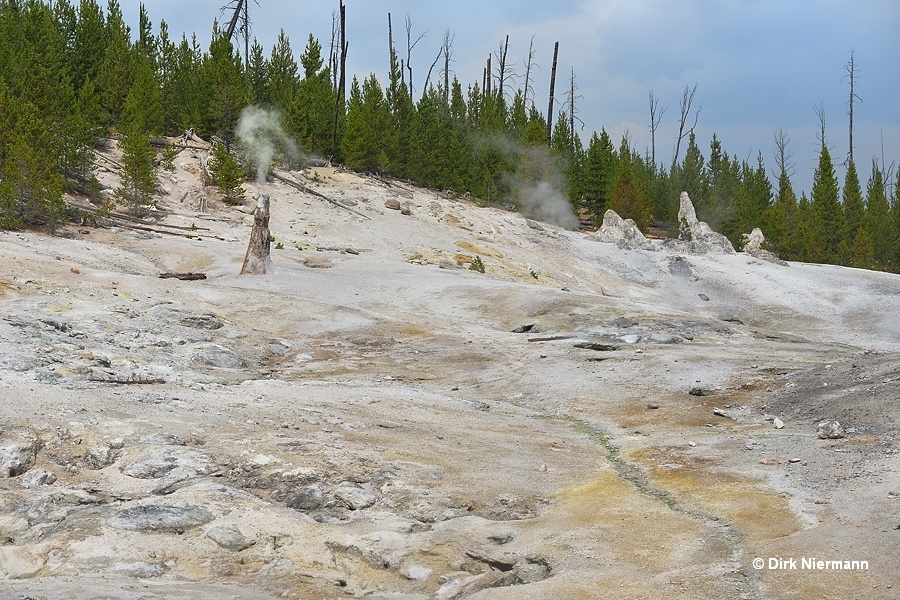
Monument Geyser's 2.5 m (8 feet) tall cone stands out (literally!) due to its shape and steam plume. Nowadays significant spraying activity no longer takes place, but it could still be observed by Eugene T. Allen and Arthur L. Day in June 1930: "From a small orifice at the top, a thin, pulsating jet, scattering into a spray, spurts upward to a height of 15 feet above ground. Part of the overflow, bathing its sides, has formed a beautifully ripple-marked surface. Most of the small discharge from the area is from this spring." (Allen and Day, Hot Springs of the Yellowstone National Park, 1935, p.491)
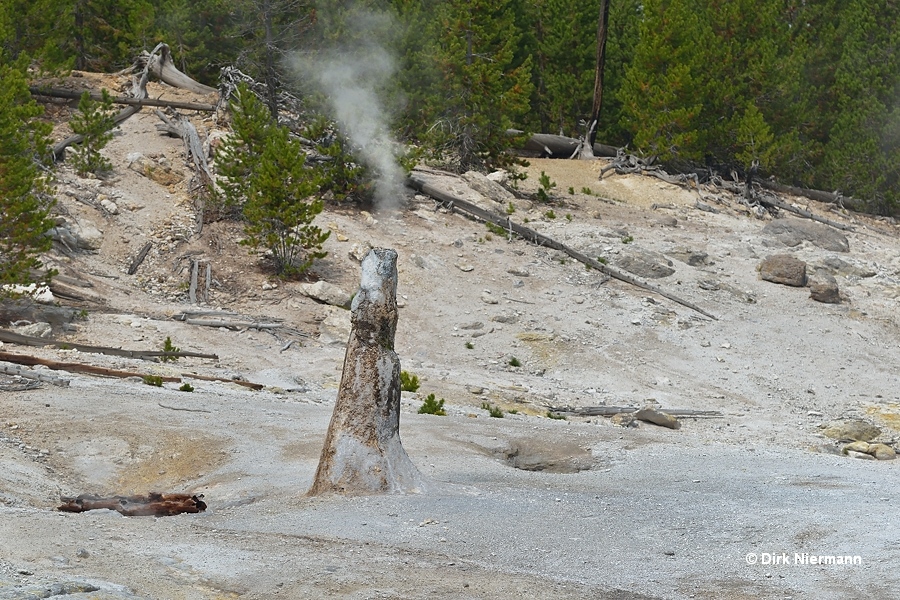
The other sinter cones farther north seem to stand close together if observed through binoculars or a telephoto lens.
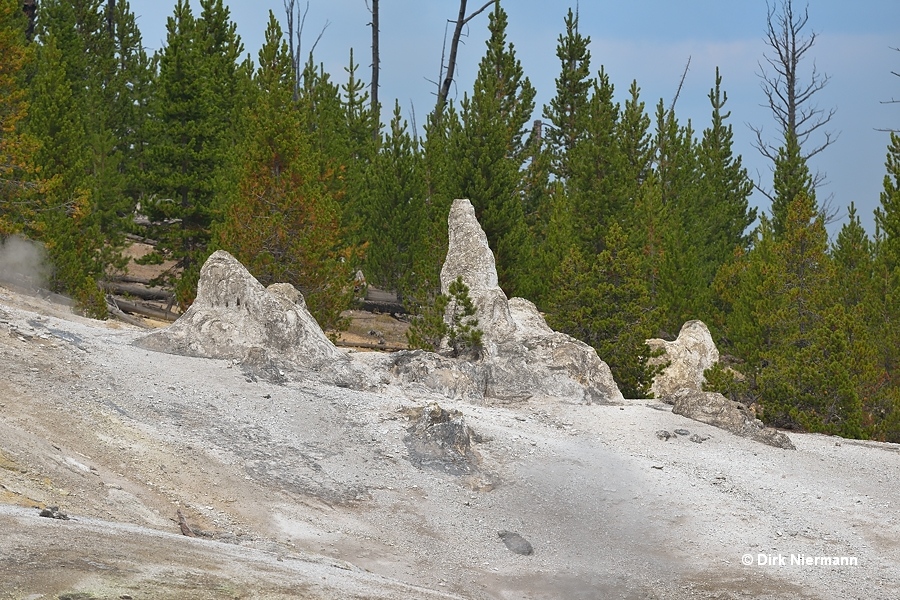
However, in order to take a closer look at them it is not advisable to cross the basin on a direct route. Many fumaroles, springs, and sinter crust make the ground trappy. If you want to take a look or picture with the rough landscape of Gibbon Geyser Basin in background, you should go counterclockwise around the thermal area through forested land. Seen from the north the sinter cones turn out to be well separated from each other.
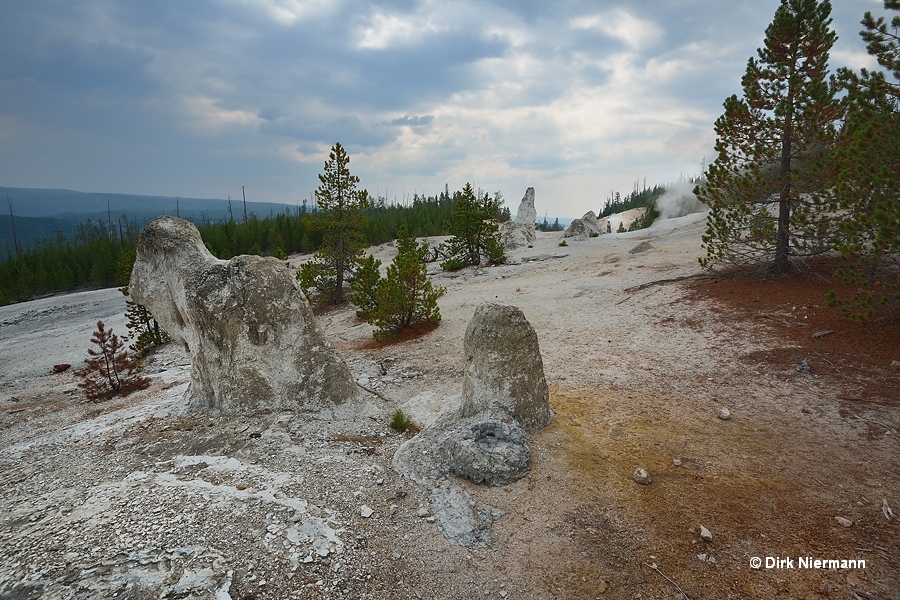
A few feet south two sinter formations, called Sperm Whale (showing dorsal fin and blow) and Sunning Seal, appear.
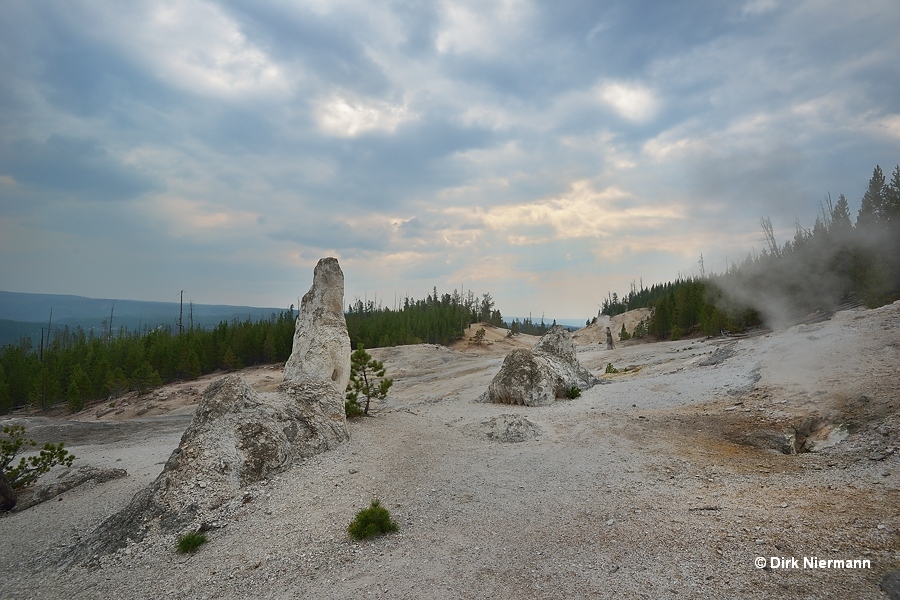
Most springs are concentrated in center of the area, but the perpetual spouter GMGBNN001 is close to the edge near the northern cones. Already the murky, yellow water indicates that this is an acidic spring.
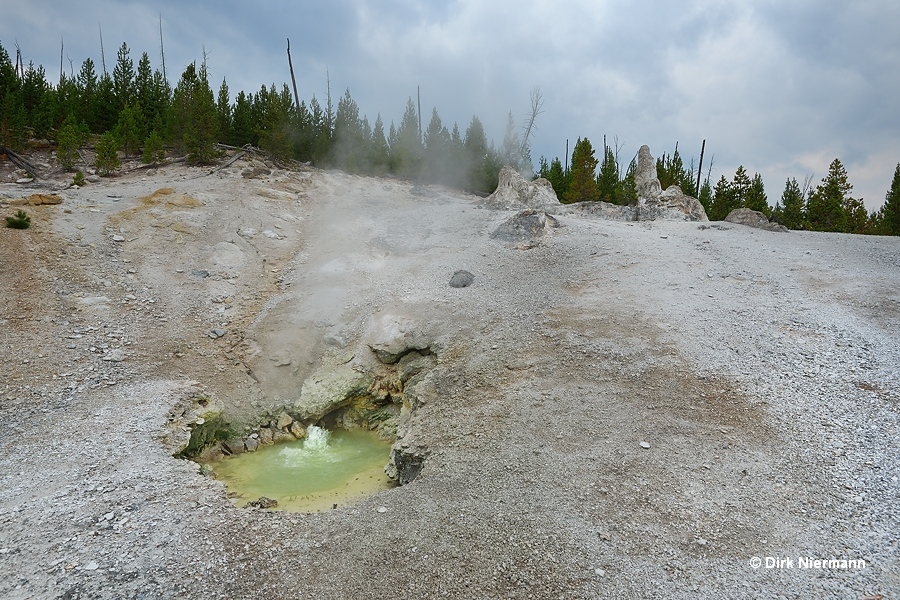
The southern part of the basin exhibits less features. One of them, called Dog's Head, is a further massive sinter cone.
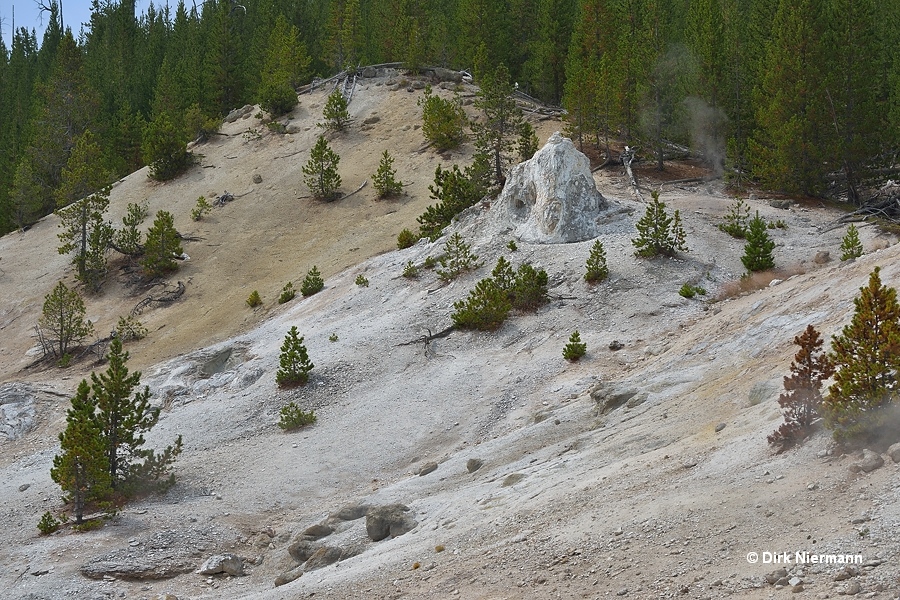
Even farther south a large fumarole / steam vent catches the eye.
